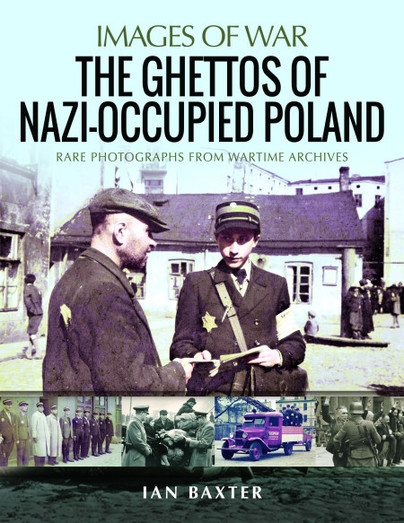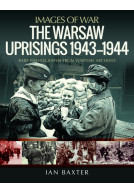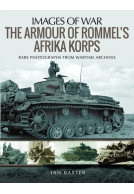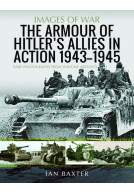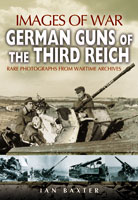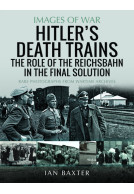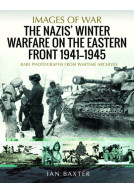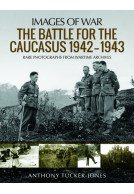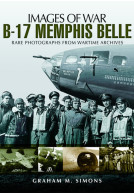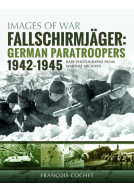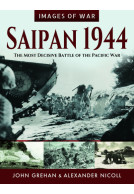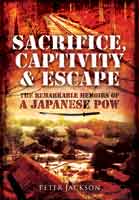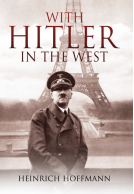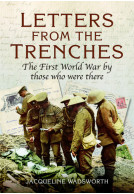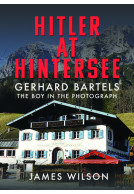The Ghettos of Nazi-Occupied Poland (ePub)
Rare Photographs from Wartime Archives
Imprint: Pen & Sword Military
Series: Images of War
File Size: 31.6 MB (.epub)
Pages: 128
Illustrations: 250 black and white illustrations
ISBN: 9781526761811
Published: 9th November 2020
| Other formats available | Price |
|---|---|
| The Ghettos of Nazi-Occupied Poland Paperback Add to Basket | £11.99 |
Following the 1940 invasion of Poland, the Nazis established ghettos in cities and towns across the country with the initial aim of segregating and isolating the Jewish community. These closed sectors were referred to as Judischer Wohnbezirk or Wohngebiet der Juden (Jewish Quarters).
Using contemporary images this well researched and inevitably harrowing book shows the harsh and deteriorating conditions of daily life in these restricted areas. In reality the ghettos were holding areas prior to the transportation to concentration, extermination and work camps, such as Auschwitz-Birkenau and Belzec. Aware of their imminent fate including the threat of family separation, enslavement and death, underground resistance groups sprung up and promoted numerous uprisings which were brutally and callously suppressed.
The Nazis’ ultimate aim was the liquidation of the ghettos and the extermination of their inhabitants in furtherance of The Final Solution. This may seem unthinkable today but, as this book graphically reveals, they worked to achieve their objective regardless of human suffering.
A new book in the very popular Images of War series. The many images present the stark horror of life in the ghettos that became holding camps until the population could be transported to the death camps – Very Highly Recommended
Firetrench
Read the full review here
A story that must never be forgotten.
Miniaturas JM
Read the full Spanish review here
Baxter has used contemporary photographs, which make for harrowing views of people and place. What makes things worse, is that today we know that these ghettos were nothing more than holding stations for Jews before being moved to extermination camps. The pictures show the reality of life in those ghettos for the residents and the conditions which deteriorated by the day.
Paul Diggett
5 stars
Read the full review here
The ghetto that fought back: Rare photos show Nazi SS troops rounding-up Jewish men, women and children after they resisted being sent to death camps for nearly four weeks during the 1943 Warsaw Uprising
Daily Mail Online 03/02/21
Another book in the Images of War series that tells a tragic testimony of a very sad page in human history. The ghettos were a part of the extermination strategy of Nazi Germany and the documentation in the book helps to understand even better what the barbarity of the Hitler regime was.
On The Old Barbed Wire
Read the full Italian review here
The content is one with such a high impact it is worthy of adding to your library. It provides imagery that people today and ongoing should never forget or that are not impacted by them.
Armorama
Read the full review here
Certainly a book which will ‘horrify’ the reader with its descriptions and photographs both black and white along with some rare colour frames most taken by German soldiers some of whom were detailed to do this. I myself visited Austwich and Birkenau Labour/Death camps outside of Krakow of which was an eye-opening experience with the realisation of the horrors that occurred within. This book has reminded me of that experience, a part of history that many want to forget but simply can’t.
Review by Andy Thomson
I have read quite a few books in this series now and this is another great addition. The text is easy to read and informative throughout and the images that have been chosen are excellent, they are poignant and the book did leave me feeling a little bereft at the loss of life and knowing what was likely to have happened to some of those features in the images.
Donnas Book Blog
The book is fine to read as a stand-alone, or it can also be used to encourage the reader to look in to more around the subject, and that is what I like most about this series. It is 5 stars from me, it was an emotive read and one that will stay with me, very highly recommended.
Read the full review here
Following the invasion of Poland by Germany in 1940, the Nazi’s decided to establish ghettos across Poland in order to segregate Polish and Jews, what was called Judischer Wohnbezirk or Wohngebiet der Juden meaning Jewish quarters. The images in this book make for grim viewing as the images often depict people’s suffering in intolerable conditions through no fault of their own. The people were to become prisoners and if you know your WW2 history these people were to be part of the Nazi’s final solution which would result in death for many people, especially if you were Jewish or even deemed not German.
UK Historian
In reality this book is about squalor, barbarity, and evil there isn’t any sugar coating it really, as this part of history was very grim. The Nazi’s went into Poland deliberately to use it as a human farm and one big death camp. While most of the pictures are as grotesque as they could be, there are still some images left in to show the grimness and the death of a number of people. While the pictures can be hard to see, these pictures should never be hidden from the world as history can never hide the evil that went on in WW2 as this can never happen again. This book looks at the ghettos, what they were used for and it also looks at the Warsaw Uprising. The information and written history in this book like the others in the series is excellent and top notch, well researched and written by the historian Ian Baxter. This is another one of those books that should be seen by as many people as possible, events like this must never happen again. I really good book indeed, I can’t give this book less than a 5 star rating because I can’t argue for it to be less at all.
Read the full review here
As featured on A Question of Scale
A Question of Scale
About Ian Baxter
Ian Baxter is a much-published author and photographic collector whose books draw an increasing following. Among his many previous titles in the Images of War Series are Hitler’s Boy Soldiers, Nazi Concentration Camp Commandants, The Ghettos of Nazi Occupied Poland, German Army on the Eastern Front – The Advance, German Army on the Eastern Front – The Retreat, The Crushing of Army Group (North) and the SS Waffen Division series including SS Leibstandarte Division, SS Totenkopf Division At War, Waffen SS of the Baltic States, Waffen SS at Arnhem and Waffen SS in the Ardennes. He lives near Chelmsford, Essex.







